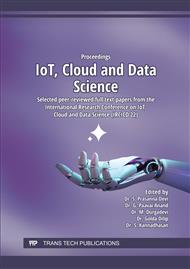p.738
p.748
p.754
p.762
p.772
p.782
p.789
p.797
p.809
Implementation of Intrusion Detection Model for Detecting Cyberattacks Using Support Vector Machine
Abstract:
A Cyber-attack is a deliberate intent to take illegal access to one’s computer and data. The ascent of the web has turned into the groundwork of the vast majority's day-to-day schedules, and online administration has raised security worries. The rising measure of information, dividing among the cloud and the clients, additionally makes an attack surface. The attack surface has likewise extended with the ascent of organizations and the rising number of individuals utilizing them. The capacity of existing discovery plans to approve the goal and the earlier acknowledgment of assaults is falling apart. In the event that no effective assurance mechanism is carried out, the web will turn out to be substantially more helpless, expanding the gamble of information spillage or hacking. The focus here is to put forward a model (IDS) that detects network intrusions or anomaly detection by classifying all the network traffic packets as non-attack (harmless) or attack (vindictive) classes and also classifying the type of malicious classes using Support Vector Machine algorithm. The machine learning algorithm Support Vector Machine works for classification as well as regression problems. Decision boundaries are usually used in Support Vector Classification (SVC). We have used two different datasets of cybersecurity, namely KDDCUP 1999 and UNSW_NB15. The proposed model has been evaluated using performance metrics, namely accuracy, precision, recall (Detection rate), and F-measure. The test results exhibit that our framework has better identification execution for various cyberattacks. This model achieves an accuracy of 99.8 percent with the KDDCUP 1999 dataset and 98.2 percent with the UNSW_NB15 dataset, and remarkable detection rates of attacks.
Info:
Periodical:
Pages:
772-781
Citation:
Online since:
February 2023
Authors:
Price:
Сopyright:
© 2023 Trans Tech Publications Ltd. All Rights Reserved
Share:
Citation:


